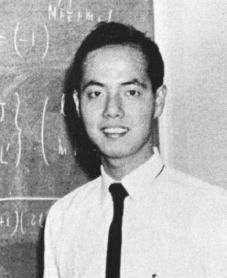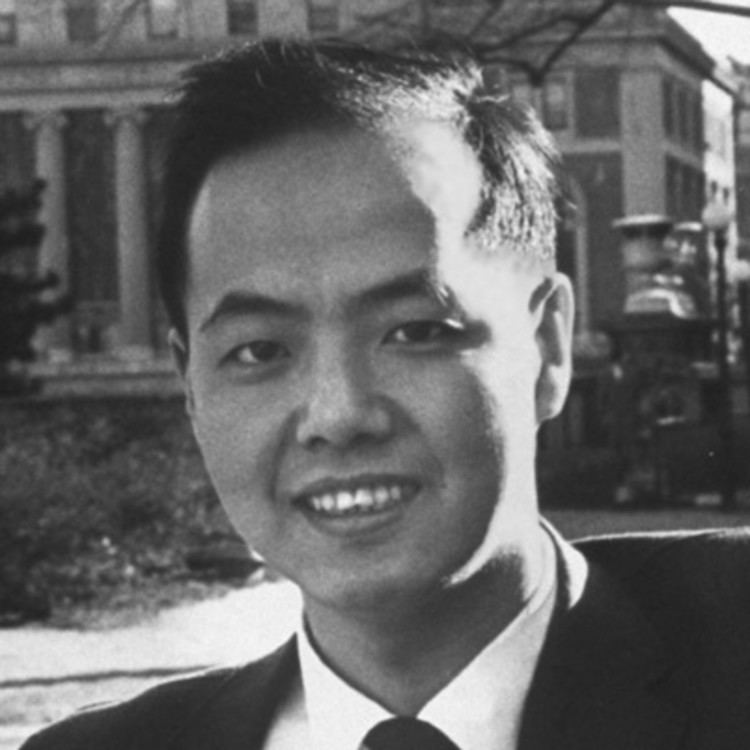Fields Physics Children Stephen Lee, James Lee | Role Physicist Name Tsung-Dao Lee Grandchildren William Little Lee | |
 | ||
Institutions Columbia UniversityInstitute for Advanced StudyUniversity of California, Berkeley Alma mater National Che Kiang University in Guizhou Province (dropped out)National Southwestern Associated University in Kunming(dropped out)University of Chicago Known for Parity violationNon-topological solitons Books TD Lee Selected Papers, Selected Papers: Random l, Selected Papers, Field Theory and Symmetry, Symmetries - asymmetries - and the w Similar People Chen‑Ning Yang, Chien‑Shiung Wu, Robert Mills, Enrico Fermi, Jon Kabat‑Zinn | ||
Tsung dao lee
Tsung-Dao Lee (T. D. Lee; Chinese: 李政道; pinyin: Lǐ Zhèngdào; born November 24, 1926) is a Chinese-American physicist, known for his work on parity violation, the Lee Model, particle physics, relativistic heavy ion (RHIC) physics, nontopological solitons and soliton stars. He holds the rank of University Professor Emeritus at Columbia University, where he has taught since 1953 and from which he retired in 2012.
Contents
- Tsung dao lee
- Family
- Early life
- Life and research in US
- Educational activities
- Personal life
- Honours and awards
- References

In 1957, Lee, at the age of 30, won the Nobel Prize in Physics with Franklin C N Yang for their work on the violation of the parity law in weak interactions, which Chien-Shiung Wu experimentally verified in 1956, with her so-called Wu experiment.

Lee was the youngest Nobel laureate after World War II until Malala Yousafzai was awarded the Nobel Peace Prize in 2014. He is the fourth youngest Nobel laureate in history after William L. Bragg (who won the prize at 25 with his father William H. Bragg in 1915), Werner Heisenberg (who won in 1932 also at 30) and Malala Yousafzai (awarded at just 17). Lee and Yang were the first Chinese laureates. Since he became a naturalized American citizen in 1962, Lee is also the youngest American ever to have won a Nobel Prize.

Family

Tsung-Dao (T. D.) Lee's ancestral hometown is Suzhou, Jiangsu Province. He was born in Shanghai.

Lee's father Chun-kang Lee (李駿康; Lǐ Jùn-kāng), one of the first graduates of the University of Nanking, was a chemical industrialist and merchant who was involved in China's early development of modern synthesized fertilizer. Lee's grandfather Chong-tan Lee (李仲覃; Lǐ Zhòng-tán) was the first Chinese Methodist Episcopal senior pastor of St. John's Church in Suzhou (蘇州聖約翰堂).
Lee has four brothers and one sister. Educator Robert C.T. Lee is one of T. D.'s brothers. Lee's mother Chang and brother Robert C. T. moved to Taiwan in the 1950s. They were jailed in Taiwan during the White Terror.
Early life
Lee received his secondary education in Shanghai, Suzhou (High School Affiliated to Soochow University, 东吴大学附属中学) and Jiangxi (Jiangxi Joint High School, 江西联合中学). Due to the Second Sino-Japanese war, Lee's high school education was interrupted, thus he did not obtain his secondary diploma. Nevertheless, in 1943, Lee directly applied to and was admitted by the National Che Kiang University (now Zhejiang University). Initially, Lee registered as a student in the Department of Chemical Engineering. Very quickly, Lee's talent was discovered and his interest in physics grew rapidly. Several physics professors, including Shu Xingbei and Wang Kan-chang, largely guided Lee, and he soon transferred into the Department of Physics of National Che Kiang University(国立浙江大学), where he studied in 1943–1944.
However, again disrupted by a further Japanese invasion, Lee continued at the National Southwestern Associated University (國立西南聯合大學) in Kunming the next year in 1945, where he studied with Professor Wu Ta-you.
Life and research in US
Professor Wu nominated Lee for a Chinese government fellowship for graduate study in US. In 1946, Lee went to the University of Chicago and was selected by Professor Enrico Fermi to become his PhD student. Lee completed his PhD thesis under Fermi in 1950 for his research work Hydrogen Content of White Dwarf Stars. Lee served as research associate and lecturer in physics at the University of California at Berkeley from 1950 to 1951.
In 1953, Lee joined Columbia University, where he remained until retirement. His first work at Columbia was on a solvable model of quantum field theory better known as the Lee Model. Soon, his focus turned to particle physics and the developing puzzle of K meson decays. Lee realized in early 1956 that the key to the puzzle was parity non-conservation. At Lee's suggestion, the first experimental test was on hyperion decay by the Steinberger group. At that time, the experimental result gave only an indication of a 2 standard deviation effect of possible parity violation. Encouraged by this feasibility study, Lee made a systematic study of possible P,T,C and CP violations in weak interactions with collaborators, including C. N. Yang. After the definitive experimental confirmation by C.S. Wu and her collaborators of parity non-conservation, Lee and Yang were awarded the 1957 Nobel Prize for Physics.
In the early 1960s, Lee and collaborators initiated the important field of high energy neutrino physics. In 1964, Lee, with M. Nauenberg, analyzed the divergences connected with particles of zero rest mass, and described a general method known as the KLN theorem for dealing with these divergences, which still plays an important role in contemporary work in QCD, with its massless, self-interacting gluons. In 1974–75, Lee published several papers on "A New Form of Matter in High Density", which led to the modern field of RHIC physics, now dominating the entire high energy nuclear physics field.
Besides particle physics, Lee has been active in statistical mechanics, astrophysics, hydrodynamics, many body system, solid state, lattice QCD. In 1983, Lee wrote a paper entitled, "Can Time Be a Discrete Dynamical Variable?"; which led to a series of publications by Lee and collaborators on the formulation of fundamental physics in terms of difference equations, but with exact invariance under continuous groups of translational and rotational transformations. Beginning in 1975, Lee and collaborators established the field of non-topological solitons, which led to his work on soliton stars and black holes throughout the 1980s and 1990s.
From 1997 to 2003 Lee was director of the RIKEN-BNL Research Center (now director emeritus), which together with other researchers from Columbia, completed a 1 teraflops supercomputer QCDSP for lattice QCD in 1998 and a 10 teraflops QCDOC machine in 2001. Most recently, Lee and Richard Friedberg have developed a new method to solve the Schrödinger Equation, leading to convergent iterative solutions for the long-standing quantum degenerate double-wall potential and other instanton problems. They have also done work on the neutrino mapping matrix.
Educational activities
Soon after the re-establishment of China-American relations with the PRC, Lee and his wife, Jeannette Hui-Chun Chin (秦惠䇹; Qín Huìjūn), were able to go to China, where Lee gave a series of lectures and seminars, and organized the CUSPEA (China-U.S. Physics Examination and Application).
In 1998, Lee established the Chun-Tsung Endowment (秦惠䇹—李政道中国大学生见习基金) in memory of his wife, who had died 3 years earlier. The Chun-Tsung scholarships, supervised by the United Board for Christian Higher Education in Asia (New York), are awarded to undergraduates, usually in their 2nd or 3rd year, at six universities, which are Shanghai Jiaotong University, Fudan University, Lanzhou University, Soochow University, Peking University and Taiwan National Tsing Hua University. Students selected for such scholarships are named "Chun-Tsung Scholars" (䇹政学者).
Personal life
Chin and Lee were married in 1950 and have two sons: James and Stephen. Lee reads whodunit novels when not working on physics. The English spelling of his given name, "Tsung-Dao", differs dramatically from the Chinese Romanization systems in use at the time of his childhood, Wade–Giles and Gwoyeu Romatzyh. Tsung-Dao Lee's publications are all under the name of T.D. Lee.
